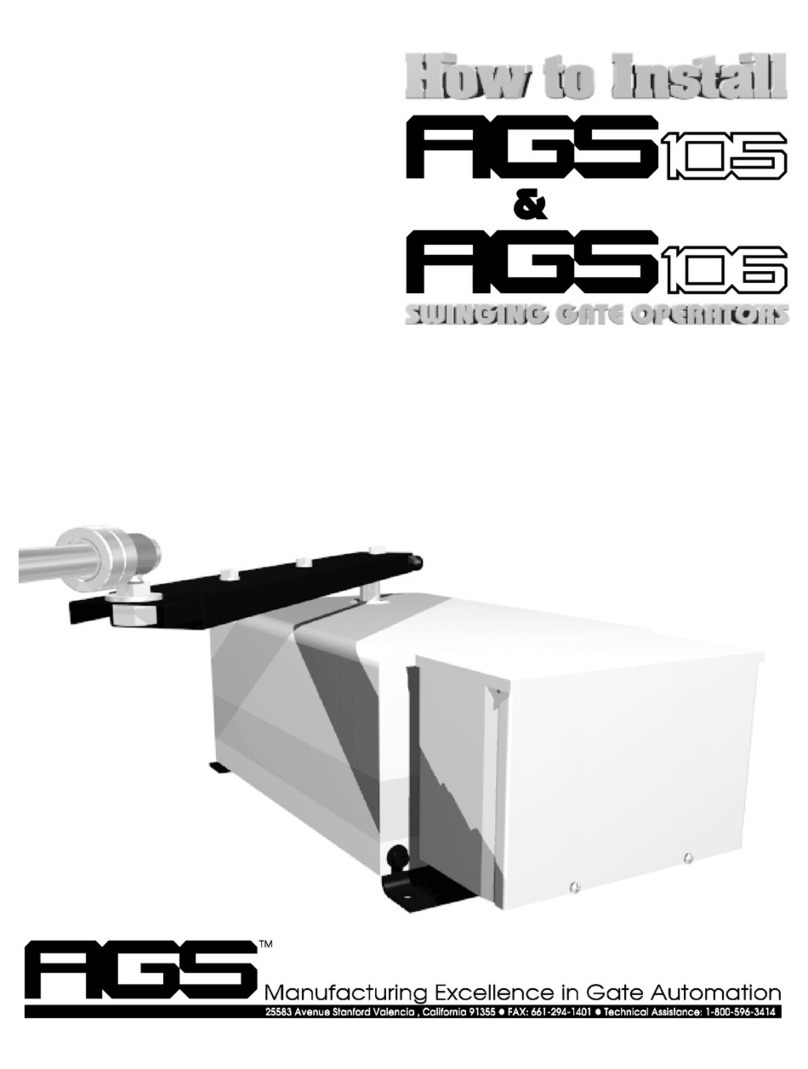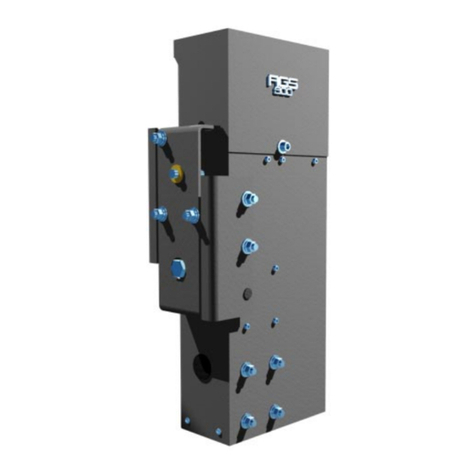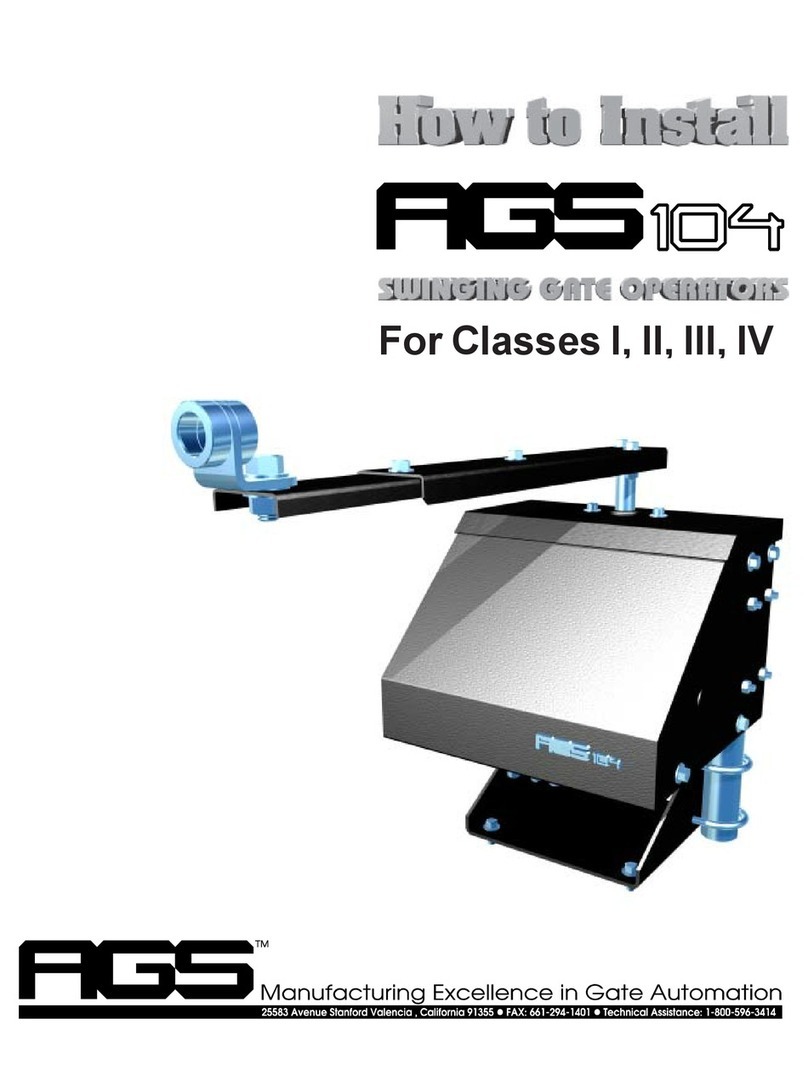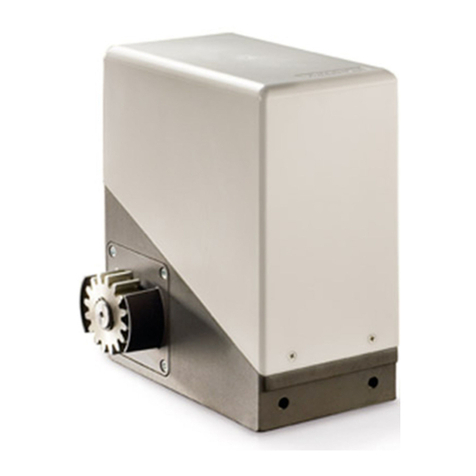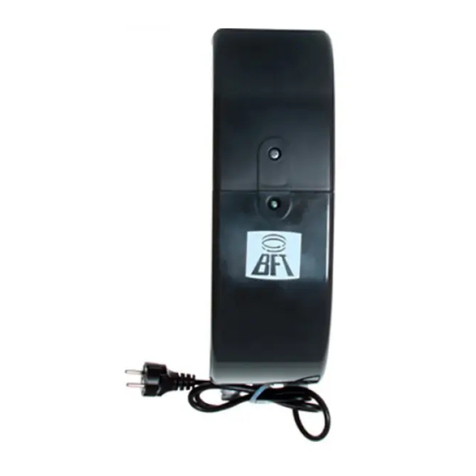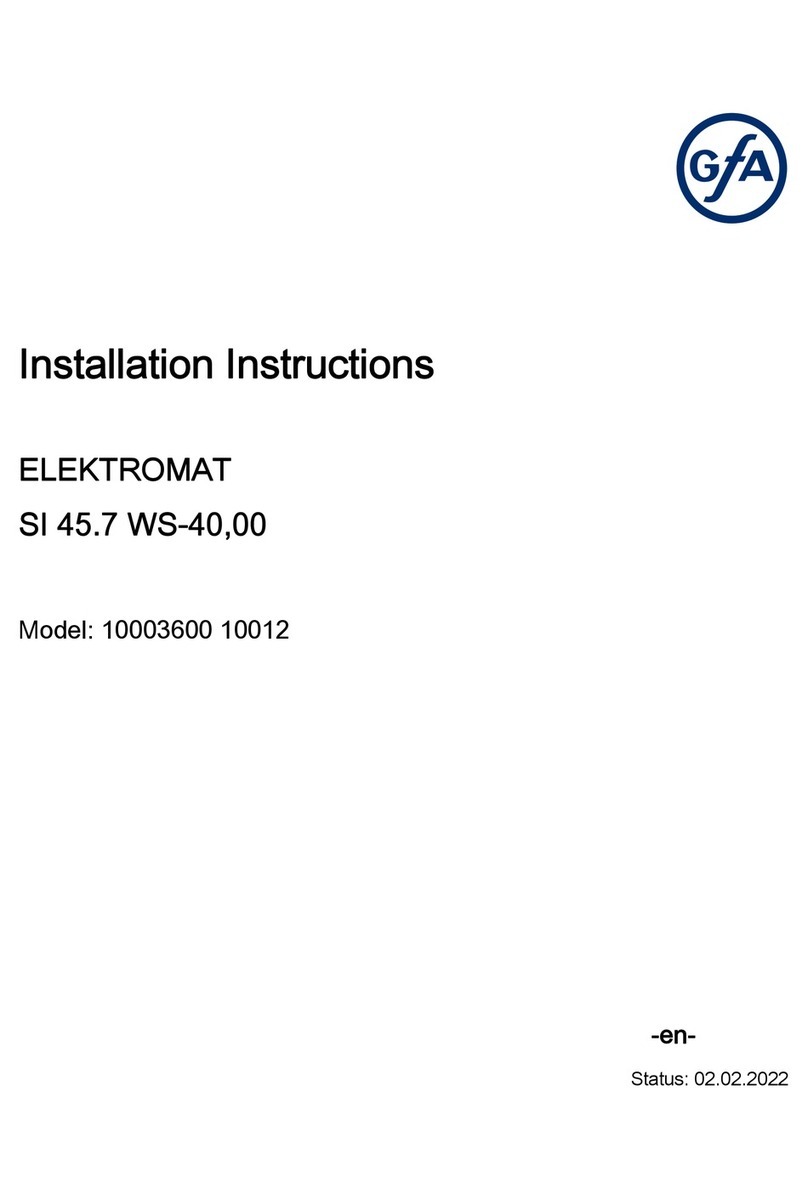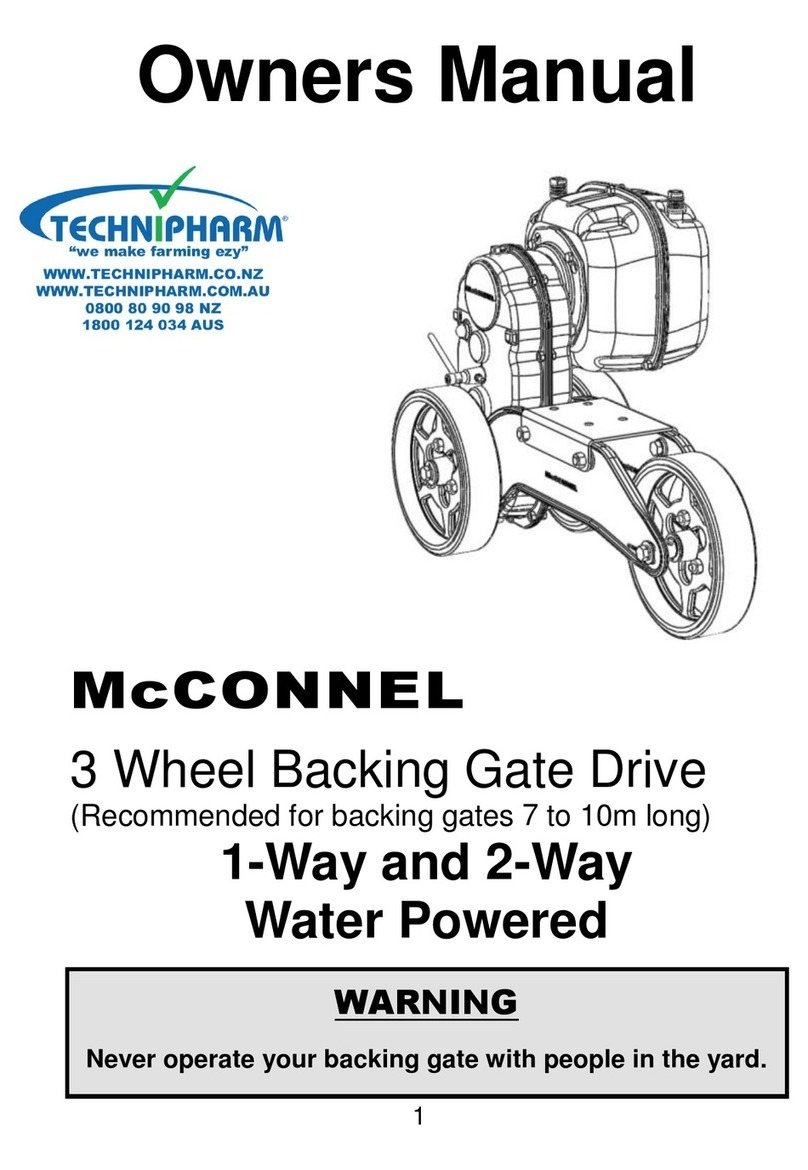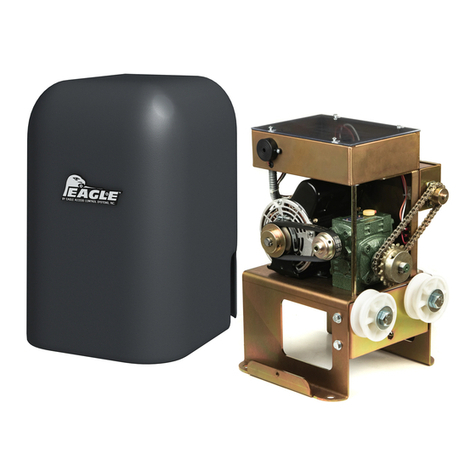AGS 2000 Instruction sheet

pg 1

pg 2
General Information.................................................................................................................3
Features...................................................................................................................................5
Parts Identification...................................................................................................................6
Installation................................................................................................................................8
Pg.
Contents
Master and Slave...................................................................................................................18
Wiring Diagrams....................................................................................................................19
Fine Tuning............................................................................................................................17
Electrical................................................................................................................................13
Alternate Installation..............................................................................................................12
Options..................................................................................................................................23
Safety Edge...........................................................................................................................21
Maintenance and Safety........................................................................................................25
Trouble Shooting....................................................................................................................26
IMPORTANT INSTALLATION INSTRUCTIONS
WARNING-To reduce the risk of severe injury or death:
1) READ AND FOLLOW ALL INSTALLATION INSTRUCTIONS.
2) Make sure that the gate is properly installed. An improperly installed door could cause severe
injury. Have a qualified service person make repairs to the gate and other hardware before installing
the opener.
3) Do not connect the opener to source of power until unstructed to do so.
4) Locate the control button: (a) within sight of the door, (b) at a minimum hight of 5 feet so small
children cannot reach it, and (c) away from all moving parts of the door.

pg 3
General Information
BASE PLATE HOLE PATTERN
mm
mm
mOVERALL DIMENSIONS: Height: 21" (53 cm) Length: 12" (30 cm) Width: 17" (43 cm)
mm
mm
mSHIPPING WEIGHT: 125 pounds (57 kg)
lOptions: Steel Mounting Stand: 23 pounds (10 kg)
mm
mm
mPOWER REQUIREMENT: Dedicated 115 Volt AC (+/- 10V), 5 AMP Power Circuit
mm
mm
mAPPLICATIONS:
lMaximum Gate Weight: 500 pounds (227 kg)
lMaximum Gate Length: 25 feet (7.6 m)
lMaximum Track Grade: 5 % (1 ft rise over 20 ft run)
mm
mm
mINCLUDED WITH OPERATOR:
l30-Feet of # 41 Roller Chain
l2-Master Links # 41
l2-Zinc Plated Chain Bolts
l2-Chain Brackets, Right and Left
l2-U-Bolts, Round (for chain brackets)
l2-U-Bolts, Square (for chain brackets)
l1-Caution Safety Sign
l1-Hex Wrench 5/16"
l1-Instruction Manual
l1-Flexible Conduit End Fitting 1/2"
l4-Sleeve Anchor Bolts (red heads) 3/8" X 3"

pg 4
mm
mm
mCIRCUIT BOARD: The AGS 2000 uses the Full Systems Capability circuit board, a powerful
control system which is used on many other AGS gate operators. This circuit board operates on 12 ~
18 Volts and can deliver power to the motor through high power switching. The limit switch input
terminals require the use of normally open type limit switches. These switches are used to accurately
stop the gate operator in the open and closed positions. To safeguard the operator from damage that
could result from limit switch or system protection failure, the Full Systems Capability circuit board
has a built-in maximum run timer which will allow the operator to run for approximately 40 seconds
and then shut off automatically. The Full Systems Capability circuit board has an adjustable gate
sensitivity feature which will stop or reverse the gate if the gate is pushing harder than normal
because of an obstruction.
mm
mm
mGATE SENSITIVITY: The AGS 2000 Full Systems Capability circuit board has a built-in system
protection feature which when adjusted properly will deliver only enough power to the motor to
overcome the resistance of the gate. The amount of power that the circuit board will deliver can be
adjusted for both directions of travel to accommodate the various gate weights that the AGS 2000
operator is recommended for. (See Applications Pg. 3)
mm
mm
mPERIPHERALS:
POWER SUPPLY: There is 12 VDC available on terminals 8 and 12 which is used to supply
power to a radio receiver.
OPEN INPUT: Normally open devices are connected to terminals 5 and 6, Open Input to
cause the gate operator to open and/or hold open the gate. This input is also used to close the gate
when the AUTO CLOSE TIMER switch is OFF, (See OPERATION).
PULSE OPEN INPUT: Normally open devices are connected to terminals 6 and 7 Pulse Open
Input to cause the gate operator to open the gate. This input functions identical to the Open Input with
the exception that if the input remains present, the Auto Close Timer will still close the gate. (See
AUTO CLOSE TIMER) The Pulse Open Input cannot be used in Push-To-Open/Push-To-Close
mode (timer off), it will not close the gate. These normally open devices that are used on the Open
Input or the Pulse Open Input can be push buttons, radio receivers, key switches, loop detectors,
photo electric beams, 24 hour timers, etc.
SAFETY INPUT: Normally open devices are connected to terminals 4 and 8 on the AGS 2000
Full Systems Capability circuit board to cause the gate operator to reverse and/or hold the gate open
in any position except the fully closed position. Normally open safety input devices that can be used
are safety edges, push buttons, radio receivers, key switches, loop detectors, photo electric beams,
24 hour timers, etc.
STOP INPUT: Normally closed devices are connected to terminals 8 and 9 on the AGS 2000
Full Systems Capability circuit board to cause the gate operator to stop in any position. This stop
input can be used as a simple safety device for pedestrian doors which may interfere with the gate's
operation. When the stop input is used, the operator will stop and remain stopped until the stop circuit
has been re-closed and until given an open input on terminals 5 and 6. Normally closed stop input
devices that can be used are push buttons, key switches, loop detectors, photo electric beams, 24
hour timers, etc.
CLOSE INPUT: Normally open devices are connected to terminals 8 and 10 on the AGS 2000 Full
Systems Capability circuit board to cause the gate operator to close the gate when in any position.
Normally open input devices that can be used are push buttons, radio receivers, key switches, loop
detectors, photo electric beams, 24 hour timers, etc.
General Information continued...

pg 5
Features
mm
mm
mOPERATION
The AGS 2000 Full Systems Capability can operate in a AUTO CLOSE TIMER (TIMER ON) or
a PUSH-TO-OPEN/PUSH-TO-CLOSE (TIMER OFF) mode of operation. In the AUTO CLOSE TIMER
mode of operation the operator is given a command to open the gate and hold it open until the input
is released and until the auto close timer has elapsed at which point the operator will close the gate
automatically. In the PUSH-TO-OPEN/PUSH-TO-CLOSE mode of operation each time a signal is
sent to the operator, it will cause it to do the opposite of what it did before. (i.e., If the gate is closed, it
will start opening, if it is open, it will start closing: If it is closing, it will REVERSE TO OPEN, if it is
opening, it will REVERSE TO CLOSE.)
mm
mm
mCONTROLS
The AGS 2000 Full Systems Capability works with the following control devices: Radio
transmitters and their receiver (specified by and available from the manufacturer). Key switches,
Push buttons (separate or intercom), numerical key pads and any peripheral equipment which can
supply normally open or normally closed contacts. These contacts can be connected to the operator
input terminals to perform the opening, close, safety, or the stop functions.
mm
mm
mAUTO CLOSE TIMER
The operator comes factory preset with the auto close timer turned OFF. The auto close timer
will close the gate automatically after a specific amount of time has elapsed. The amount of time can
be easily adjusted between 0 and 45 seconds by turning a small "pot" located on the right edge of the
circuit board (See page 17). The timer can be disabled or activated by flipping a single switch located
on the top right edge of the circuit board. If the timer will be used it is recommended that some type of
supplementary safety device be installed. If more time is required, there is an extended timer
available from the manufacturer allowing up to 100 min. (See Options)
mm
mm
mMANUAL RELEASE SWITCH
This simple on-off switch is built into the operator. In an emergency, EVEN WITH THE
POWER OFF, the gate can be pushed open manually after flipping the switch from Operate to
Release. This switch may also be removed and placed externally from the machine.
mm
mm
mGATE SENSITIVITY ADJUSTMENT FOR SYSTEM PROTECTION
The amount of force necessary to stop the gate can be adjusted to conform to the various
sizes and weights of any particular gate. When adjusting the sensitivity, the operator can be given
only as much energy as is necessary to overcome the resistance of the gate. If the gate should strike
an obstruction in the closing direction, the gate will reverse to the open position. If the gate should
strike an obstruction in the opening direction, the gate will stop and remain stopped until commanded
to return to operation. (See page 17.)
mm
mm
mMASTER AND SLAVE
Some very large entrances may require the use of two gates. If this is the case, the two gates
can be easily automated using the "master and slave" configuration. This configuration uses two
gates and two operators in ONE driveway. The operators used are two regular AGS 2000 Full
Systems Capability operators one of which is of standard "right hand operation" and the other which
is easily converted to "left hand operation" by flipping a single switch located at the top of the circuit
board. (See page 17.)

pg 6
Parts Identification

pg 7
Parts Identification continued...
PART # QNTY. QNTY.
001 1 ALLEN WRENCH FOR COVER, 5/16" HEX KEY
002 2 BEARING, SELF ALIGNING, 1" BORE
003 4 BOLT, 3/8"-16 X 1", SOCKET HEAD CAP
004 4 BOLT, SLEAVE ANCHOR, 3/8" X 3"
005 1 BRIDGE RECTIFIER, 35 AMP
006 2 CHAIN BRACKET ANGLE, RIGHT AND LEFT
007 1 CHAIN, #41, 30 FT
008 1 CIRCUIT BOARD, FULL SYSTEMS CAPABILITY
009 1 CIRCUIT BREAKER RESET BUTTON, 2.5 AMP
010 1 COVER, LARGE METAL FOR OPERATOR
011 1 COVER, PLEXI GLASS FOR CIRCUIT BOARD
012 1 DRIVE SHAFT 1" WITH THREADED BODY
013 1 FITTING, 90 DEGREE FOR FLEX CONDUIT
014 1 FITTING, STRAIGHT FOR FLEX CONDUIT
015 1 FRAME SUBSTRATE
016 1 GEAR BOX SPEED REDUCER, ON MOTOR
017 1 HANDY BOX FOR 115 VOLT RECEPTACLE
018 1 HANDY BOX RECEPTACLE COVER PLATE
019 1 IDLER PLATE, FOR MOUNTING SPROCKETS
020 1 LIMIT GUIDE PLATE
021 2 COMPRESSION SPRING FOR GUIDE PLATE
022 2 LIMIT NUT
023 2 LIMIT SWITCH
024 0 LIMIT SWITCH ASSEMBLY
025 1 LIMIT SWITCH MOUNTING PLATE
026 2 MASTER LINK #41
027 1 MOTOR, 1/2 HP, 24VDC
028 0 OPTION, SPACE SAVER FOR REAR MOUNT
029 0 OPTION, STEEL MOUNTING STAND
030 2 PLATE, SIDE, RIGHT AND LEFT
031
032
033
034
035
036
037
038
039
040
041
042
043
044
045
046
047
048
049
050
051
052
053
054
055
056
057
058
059
060
1 RECEPTACLE, 115 VOLT DUPLEX
1 RESISTOR, BALLAST, 2 OHM
1 SIGN, METAL CAUTION
1 SPROCKET, DRIVE #41, 1" BORE, 41B18
2 SPROCKET, IDLER #41, 3/4" BORE, 41B24
1 SPROCKET, LARGE GEAR REDUCTION 41B54
1 SPROCKET, SMALL GEAR REDUCTION ON MOTOR
4 STANDOFF, 1" ALUMINUM, M/F, FOR PLEXI GLASS
4 STANDOFF, 1/2" ALUMINUM, F/F, FOR CIRCUIT BOARD
1 STICKER, AGS 2000
SWITCH, MANUAL RELEASE
1 POWER CORD "PIG TAIL"
1
4 SCREW, 6-32 X 3/8" PAN HEAD PHILLUPS
2SCREW, 8-32 X 1" SOCKET HEAD CAP
1WASHER, SPLIT RING 5/16" ID
2BOLT, HEX HEAD 5/16"-18 X 3/4"
2
2U-BOLT, SQUARE
U-BOLT, ROUND
TRANSFORMER, 24 VOLT
SWITCH, POWER ON/OFF TOGGLE
1
1
STRAIN RELEIF CONNECTOR FOR PIG TAIL
1STICKER, PATENT
1STICKER, ON/OFF BREAKER1STICKER, MANUAL RELEASE
1STICKER, CAUTION1STICKER, AGS MANUFACTURING
1
PART # QNTY. QNTY.
061 4 WASHER, 3/8" ID, STAINLESS
062 4 NUT, JAM STYLE
063 2 WASHER, SPLIT RING 5/8" ID
064 4 SCREW, SOCKET HEAD CAP
065 4 LOCK NUT
066 7 SCREW, SOCKET HEAD CAP 3/8"-16
067 20 FLAT WASHER, 3/8" ID
068 7 SCREW, SOCKET HEAD CAP
069 2 BOLT, HEX HEAD
070 2 BUSHING, BRONZE
071 1 KEY, 3/16"
072 2 SCREW, SOCKET HEAD CAP
073 4 WASHER, FLAT 3/16" ID
074 4 BOLT, HEX HEAD 3/8"-16
075 4 WASHER, SPLIT RING 3/8" ID
076 2 KEY, WOODRUF 1/4"
077 4 SCREW, PAN HEAD PHILLUPS
078 1 POWER CORD (PIG TAIL)
079 1 RECEIVER (OPTIONAL)
080
081
082
083
084
085
086
087
089
090
091
092
093
094
095
096
097
098
099
100
101
102
103
104
105
106
107
108
109
110
111
112
113
114
115
116
117
118
119
120
088

pg 8
mRemove the gate operator from it's
package and make sure that all parts are
included. Refer to General Information and
Parts Identification. If any parts appear to be
missing, contact a dealer.
mTemporarily plug the operator into
115 Volt outlet or extension cord.
mBefore beginning installation, test
the gate operator by running the operator
back and fourth 2 or 3 times. If the gate
operator appears to have any shipping
damage, contact a dealer.
mIf the gate operator is equipped with
radio controls, the operator may be run back
and fourth by pressing the radio transmitter.
mIf the gate operator is not equipped
with radio controls, the operator may be run
back and fourth by momentarily touching the
open input terminals together. The terminals
can be touched together with a short length
of wire, paper clip or needle nose pliers. For
the full systems capability circuit board, the
open input terminals are 5 and 6.
mDisconnect Power when finished!
mIf the gate operator is equipped with
radio controls, now is a good time to set the
radio transmitter and receiver to a unique
setting. All units come from the factory with
identical settings and therefore it is advisable
to change the setting. To change the switch
setting, simply set the switches in the radio
receiver (using a paper clip or similar) to any
arbitrary setting and then set the switches in
the transmitter/s to match the switches in the
receiver. The battery in the transmitter may
last 1 to 2 years. Be sure to replace the
battery only with one that is the same type as
the original (9 Volt).
Installation
INSPECT PACKAGING
TEST OPERATOR
SET TRANSMITTER SWITCHES

pg 9
Installation continued...
mDisconnect Power from the gate
operator!
mThe tail end of the gate should
extend approximately 24" beyond the edge
of the driveway. If this is not the case, an
extension tail will need to be added to the
gate. This will give room for the gate opera-
tor. Make the extension tail 24" X 24" as
shown. If the gate has not yet been fabri-
cated, add 24" to the length of the gate.
mIf no concrete surface exists to
attach the gate operator to, make a cement
pad 16" X 24" X 10" (4" above ground).
Place the shortest pad edge even with the
driveway edge. Place the longer edge of the
pad 1" away from the gate.
mIf the steel mounting stand will be
used, place the shortest edge of the stand 4"
from the driveway edge and place the
longest edge of the stand 4-1/2" away from
the gate. The top of the steel stand may sit
on the ground or the stand may be elevated
to keep the operator above snow, flooding
etc. Make a post hole and cement the stand
in place, making sure the stand is level and
square to the gate.
GATE PREPERATION
CEMENT PAD LOCATION
OPTIONAL MOUNTING STAND

pg 10
Installation Continued...
mIf the steel mounting stand was
used, simply bolt the gate operator to the
stand. If the operator will be mounted to a
concrete surface or pad, place the shortest
edge of the operator 4" away from the edge
of the driveway. Place the longer edge of the
gate operator 2-1/2" away from the gate.
mWhen the gate operator is correctly
positioned on the concrete surface or pad,
mark the base hole locations onto the
cement with a felt tip marker or equivalent.
Once marked, move the operator to the side
and drill the 4 holes using a 3/8" masonry bit.
Place the operator back into position. Insert
the four sleeve anchors into the holes and
firmly tighten.
mNow that the operator is firmly
attached, the chain may now be connected
to the gate and operator. Begin by threading
the chain through the sprockets. The sprock-
ets come arranged as shown so that the
chain may be threaded under the idler
sprockets and over the drive sprocket.
Alternately, the chain may be threaded over
the idler sprockets and under the drive
sprocket by moving the idler sprockets to the
alternate positions above. Note: the cover
will need to be modified for the alternate
arrangement.
POSITION GATE OPERATOR
ANCHOR THE OPERATOR
THREADING THE CHAIN

pg 11
Installation Continued...
mAttach the gate bracket to the gate
as shown using the round or square u-bolts
for round or square gate frames respectively.
Attach the chain to the gate brackets using
the chain bolt and master link as shown. If
necessary, the chain may be easily short-
ened using a chain breaker. Adjust the
height of the gate brackets until the chain is
level and firmly tighten the u-bolts. For round
gate frames it may be necessary to drive the
self tapping screw through the gate bracket,
and into the gate.
mThe limit nuts need to be adjusted to
cause the gate to stop in the desired open
and closed positions. These adjustments
can be roughly made before power has been
hooked up by flipping the manual release
switch and pushing the gate manually. Push
the gate to the open position and adjust the
limit nut to press the limit switch in. The limit
nuts can be turned after pressing down on
the guide plate. Push the gate closed and
adjust the other limit nut to press in the other
limit switch. Caution "do not allow the limit
nuts to travel past the switch as this may
damage the switches". When finished, make
sure the guide plate is properly engaged with
the grooves on the limit nuts.
ATTACH CHAIN TO GATE
ADJUST LIMITS

pg 12
Alternate Installations
mThe rear mount installation is an
excellent way to conceal the chain or opera-
tor. The operator is placed in the extreme
rear of the gate as shown and the chain
never goes across the driveway. The chain
only goes from the gate operator to a post or
wall beside the driveway. Place shortest
edge of the operator 3" from the rear end of
the gate and place the long edge of the
operator 3-1/2" away from the gate toward
the wall.
mThe chain will form a continuous
loop, going around the drive sprocket on the
operator, and around the idler sprocket on
the post or wall. Only one gate bracket is
required on the rear edge of the gate where
both ends of the chain come together and
attach to the bracket. To prepare the AGS
2000 for a rear mount installation, remove
one or both idler sprockets from the opera-
tor. Neither idler sprocket will be needed on
the gate operator. For the idler sprocket, an
ES130 End Sprocket Assembly with chain
guard may be used. Alternately, an idler
sprocket that was removed from the gate
operator may be used. It is recommended
that a cover be placed over the idler sprocket
in this case for safety.
REAR MOUNT PLACEMENT
CHAINARRANGEMENT

pg 13
Electrical
mMake sure that power is OFF
before making any electrical connections!
mThe operator is provided with two
knockout holes on each side. Run 1/2"
liquidtite flexible conduit through one of the
four knockout holes and into the handy box
where the receptacle is located. An elbow
fitting is attached to the handy box and a
straight fitting is supplied for the other end of
the flexible conduit. Run three 12 gauge
wires through the flexible conduit and into
the handy box. There should be a black or
other colored wire for hot, a white wire for
neutral, and a green wire for earth ground.
mConnect the three 12 gauge wires to
the 115 Volt receptacle.
mConnect the black (hot) wire to the
brass screw.
mConnect the white (neutral) wire to
the silver screw.
mConnect the green (ground) wire to
the green grounding screw.
mWhen the wires have been con-
nected to the receptacle, insert the recep-
tacle back into the handy box. Secure the
receptacle to the handy box with two screws.
Apply the receptacle cover to the receptacle
and secure it with a screw. The power cord
may now be plugged into the receptacle.
mIf the gate operator is already factory
CONDUIT ROUTING
STANDARD 115 VOLT HOOK-UP

pg 14
Electrical Continued...
equipped with battery back-up, only the
Right/Left Side switch and the Mode switch
need to be set. The Right/Left switch simply
needs to be set in the same position as the
Right/Left switch on the main control board.
(See page 17 for correctly setting the Right/
Left switch on the control board) The Mode
switch can be set in either the Mode 1 or
Mode 2 position. This choice between
Mode1 or Mode 2 depends on how the
installer or end user would like the gate to
behave when power is lost.
mMode 1: Gate will continue to
operate when power is lost. When battery
power gets low, the gate will open and stay
open until power is restored. (Fail Secure)
mMode 2: Gate will open immediately
when power is lost and remain open until
power is restored. (Fail Safe)
mIf the gate operator did not come
from the factory equipped with battery back-
up, field installation of battery back-up is very
simple. The illustration at left shows addi-
tional wiring required for battery back-up that
is not part of the standard wiring.
mFirst turn power off to the gate
operator.
mDisconnect the brown and red wires
from terminals 13 and 14 and insulate the
ends of the wires.
mSecure the charger board to the
main control board by attaching to the 14
screw terminals on the left side of the control
board.
mConnect a green wire from terminal
2 to terminal 15 of the control board.
mAttach an orange wire from terminal
D of the charger board to terminal 18 of the
main control board.
mFinally, attach a red wire from
terminal A to battery positive and a black
wire from terminal B to battery negative.
BATTERY BACK-UP
BATTERY BACK-UP

pg 15
Electrical Continued...
mOPEN INPUT: Any device that is used to
open the gate from a closed position is an open input
device. The device used must provide normally open
contacts. These normally open contacts are con-
nected to terminals 5 and 6. These open input termi-
nals will cause the gate operator to open and/or close
if the timer switch is in the OFF position. If the timer
switch is in the ON position, these open input termi-
nals will cause the gate operator to open and will hold
the gate open until the input is released and the auto
close time has elapsed.
mCLOSE INPUT: Any device that is used to
close the gate is a close input device. The device
used must provide normally open contacts. These
normally open contacts are connected to terminals 9
and 10. These close input terminals will cause the
gate operator to close the gate any time the gate is in
a non-closed position and can be used to override the
timer and close the gate prematurely.
mN.C. STOP INPUT: Any device that is used to stop the gate operator while it is running in the open or closed
direction is a stop input device. These stop input devices must provide normally closed contacts. To connect these nor-
mally closed contacts, remove the stop jumper from terminals 8 and 9 and then connect the contacts to these same
terminals 8 and 9.
mN.O. STOP INPUT: This input functions identical to N.C. Stop with the exception that it requires normally open
contacts. These contacts are connected to terminals 9 and 11.
mSAFETY INPUT: Any device that is used to open and/or hold open the gate while the gate is in a non-closed
position is a safety input device. The safety input device must provide normally open contacts. These contacts are con-
nected to terminals 4 and 6. This function is especially useful when the auto close timer is being used in preventing the
gate from accidentally closing on a pedestrian or vehicle.
mPULSE OPEN INPUT: The pulse open input terminals were put on the circuit board as an alternative connection
for the radio receiver. This input functions similarly to the standard open input with the exception that it will not hold the
gate open if the input remains present. This feature will add additional security to the gate operator system in the event that
there is a transmitter that is stuck on. Pulse open is found at terminals 6 and 7.

pg 16
Wiring Diagrams, Button Controls
lOne button, two button and three button controls may be
connected individually or together as shown below. Most button
controls have a common "buss bar" which connects the common
terminals of all buttons together so that only one common wire
needs to be run back to the gate operator control board. If this is
not the case, the common terminals of each button may be
connected together with wire.
lConnect the common terminal or terminals (COM) of the push
button control to the Common (terminal 6) on the gate operator
control board. Connect the Open button NO terminal of the push
button control to Open (terminal 5) on the gate operator control
board. Connect the Close button NO terminal of the push button control to Close
(terminal 10) on the gate operator control board. If the stop button has normally
closed contacts, connect the Stop button NC terminal to Stop (terminal 9) and
remove the stop jumper that is on terminals 8 & 9. If the stop button has normally
open contacts, connect the Stop button terminal NO to the NO Stop (terminal 11)
on the gate operator control board.
lIf more than one push button control is used on one gate operator, connect
wires from the Open, Close and Common in parallel to the control board. If the
stop button has normally closed, contacts connect the stop buttons in series to the
control board. If the stop buttons have normally open contacts, connect the stop
buttons in parallel to NO Stop (terminal 11) on the control board.

pg 17
Fine Tuning
mThe gate operator is designed to
work differently while opening then while
closing to optimize safety, so the direction of
the operator will need to be set. Setting the
operator direction is done by flipping the
right/left side switch located at the top of the
circuit board. For a left side installation flip
the switch to the left and for a right side
installation, flip the switch to the right (see
illustrationabove).
mIf it is desirable to have the gate
close automatically after the gate has
opened, flip the auto close timer switch to
the ON position. Adjust the amount of time
the gate stays open by turning the timer
adjustment pot counter clockwise for less
time or clockwise for more time. The range
is roughly 0~45 seconds.
mFor protection of the over all system
there are two "sensitivity" adjustments on the
circuit board for the open and close direc-
tions. Turning the pots clockwise "increase"
will cause the gate to stop or reverse more
easily if there is an obstruction preventing
the gate from moving. Turning the pots
counter-clockwise "decrease" will cause the
gate to push harder before it stops or
reverses. The operator is designed to stop
the gate if obstructed while opening and
reverse the gate if obstructed while closing.
If adjusted too sensitive the gate may stop or
reverse under it's own weight, without being
obstructed and the sensitivity will need to be
slightly decreased. Temperature, wind, and
other environmental factors may also effect
the sensitivity so the setting should be made
with these factors in mind. Before finalizing
an installation always test the sensitivity by
applying pressure against the gate while it is
moving to make sure it will stop or reverse.
ADJUST TIMER
ADJUST SENSITIVITY
NOTE:
Counter-Clockwise makes gate push harder.
Clockwise makes gate easier to stop.

pg 18
lConnect 115 Volts AC to each AGS 2000 gate operator. Connect the six Master/Slave wires from the master circuit
board to the slave circuit board as shown below. Any operator can be used as either a master or a slave. All accessories
will be connected to the master operator so the decision of which operator will be the master and which operator will be the
slave is a matter of convenience. If it is more convenient to run accessory wires to one operator than to another, choose
that particular operator which is most convenient to be the master so that the wires can be run in the easiest manner
possible.
lSwitch the Auto Close Timer switch to the OFF position on the slave circuit board. The Auto Close Timer switch on the
master circuit board may be switched either ON if the timer function will be used or OFF if the timer function will not be
used but the slave timer must always be switched OFF.
lIf the chain is wrapped around the sprockets in the same manner on each operator (both chains under or both chains
over the drive sprocket) set the Right/Left Side Operation switch on the master circuit board to be the opposite of the way it
is set on the slave circuit board. If the chain wrapped around the drive sprocket on the master operator is the opposite of
the way it is wrapped around on the slave operator then set the Right/Left Side Operation switches the same on both
operators. The Right/Left Side operation switch is located on the circuit board. If the operators are working backwards, the
Right/Left Side Operation switches on both operators must be switched. The simplest way to know if the operators are
working backwards is to turn the Auto Close Timer switch on the master circuit board to ON and see whether the timer
works when the gate is open or closed. The timer should work only when the gate is open. Another way to know if the
operators are working backwards is to try the gate sensitivity by applying pressure against the gate while the gate is
opening or closing. If pressure is applied while the gate is opening it should stop. If pressure is applied while the gate is
closing it should reverse and go open. If the gate responds to pressure in a way that is opposite of this then switch the
Right/Left Side Operation switch on both operators.
AGS 2000 MASTER/SLAVE
Master/Slave Wiring 2/26/96

pg 19
Wiring Diagram

pg 20
Wiring Diagrams AGS 2000 WITH BATTERY BACK-UP
Table of contents
Other AGS Gate Opener manuals
Popular Gate Opener manuals by other brands

MFZ Ovitor
MFZ Ovitor E6L user manual

Real Carriage Door & Sliding Hardware
Real Carriage Door & Sliding Hardware Franklin Autoswing installation manual

Chamberlain
Chamberlain Elite SL595101U Series installation manual
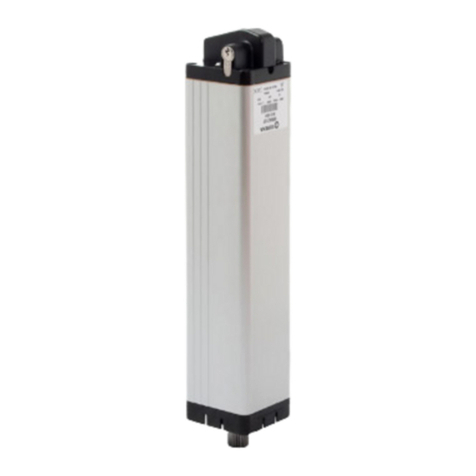
Erreka
Erreka MAGIC Installer manual
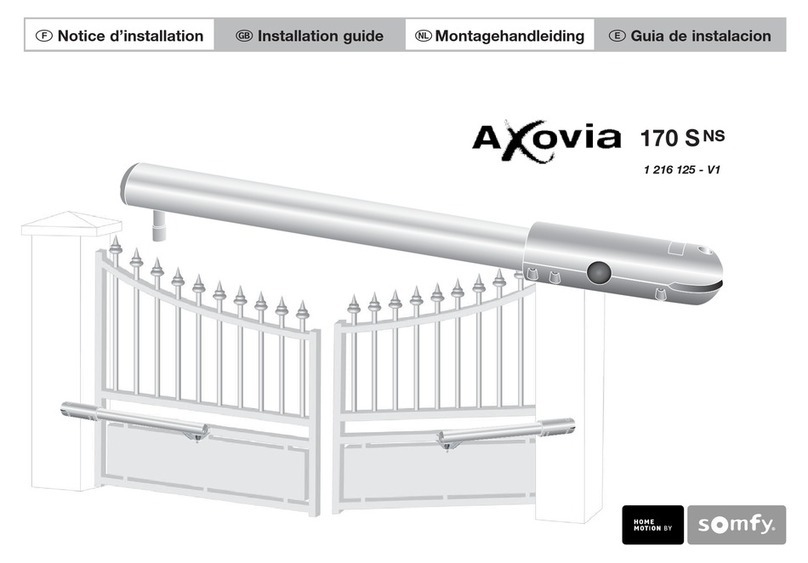
SOMFY
SOMFY Axovia 170 SNS installation guide

ROLLING CENTER
ROLLING CENTER GCG2000 Technical data
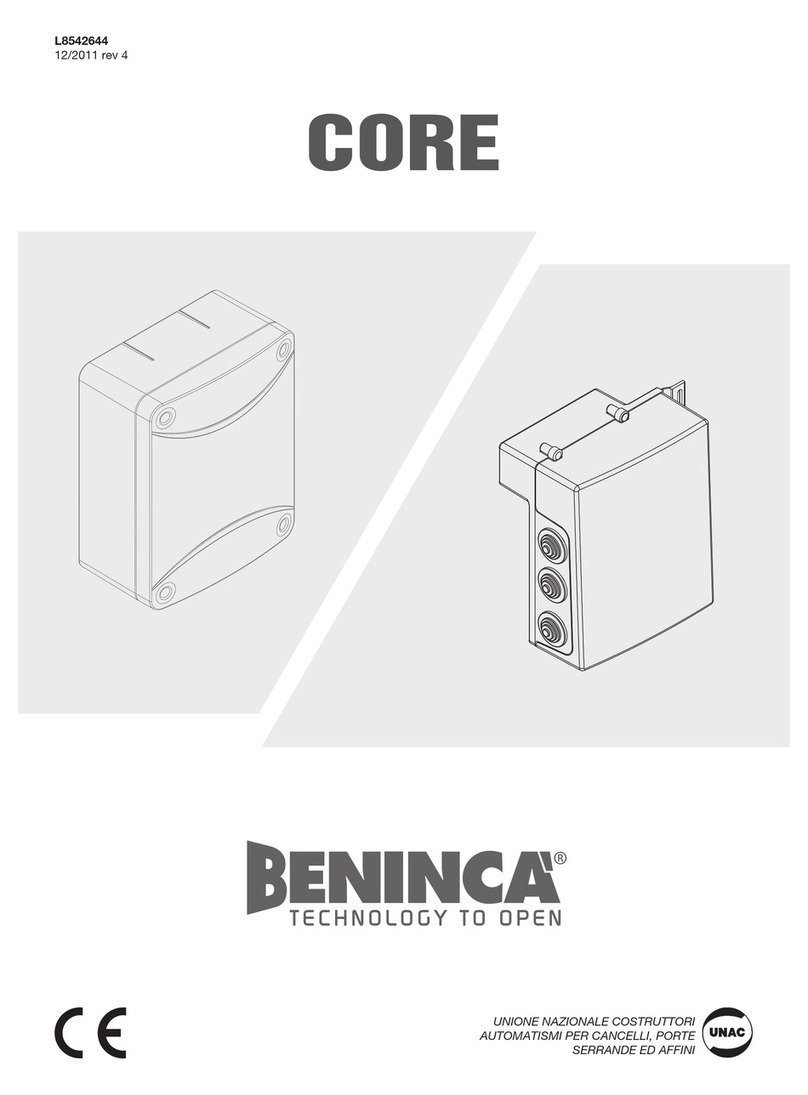
Beninca
Beninca CORE user manual
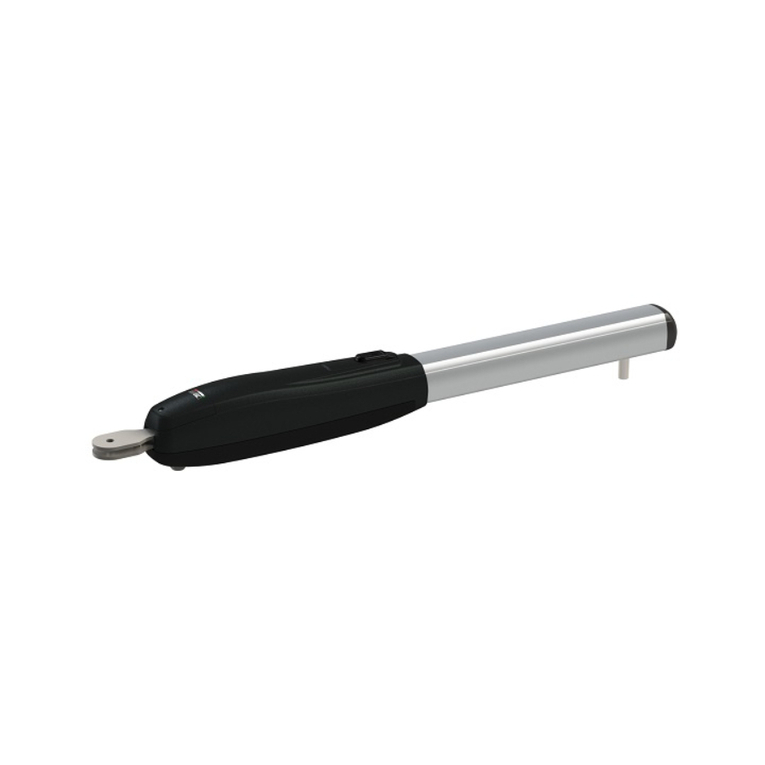
Roger
Roger SMARTY Series INSTRUCTIONS AND RECOMMENDATIONS FOR THE INSTALLER
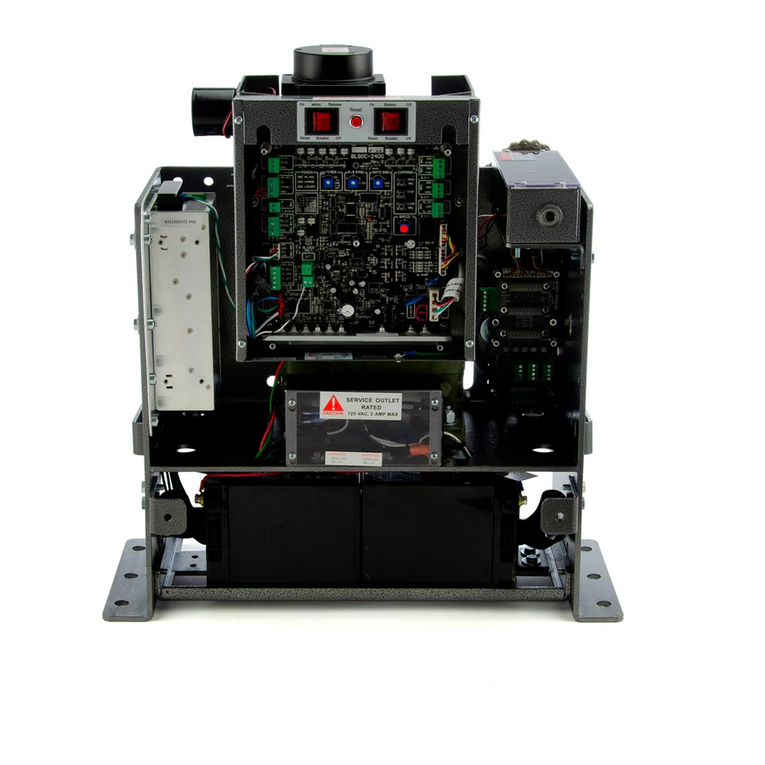
Platinum Access Systems
Platinum Access Systems BLSL3060 Installation instructions & owner's manual

BFT
BFT DEIMOS BT H QSC Installation and user manual
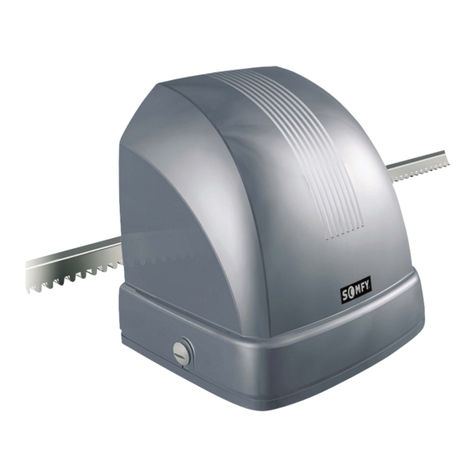
SOMFY
SOMFY axovia 400C installation guide

Erreka
Erreka IZAR Installer manual
